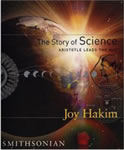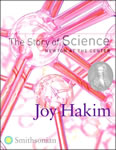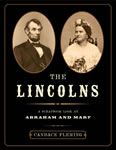Teacher as Learners
Philosophy: "Less me, more we."
Demonstrate your passion for learning. Ask questions. Talk about what you're learning. Build a community of learners. Create synergy through an authentic class project.
Select Nonfiction
Look for resources (books, websites) with
- an interesting and motivating writing style with lots of examples and topics that appeal to the age group
- focused text that won't overwhelm readers such as Rock Climbing (Google Limited Preview) by Chris Oxlade
- appealing visuals, charts/graphs/diagrams, and varied images that support the text. For instance, Eyewitness series or DK Readers by Dorling Kindersley are popular because of their illustrations
- audio enhancements. For instance, At the Beach from Starfall.
- video enhancements. For instance, Day in the Life of a Special Agent from the FBI
- table of contents, glossary and other organizers. For instance, Writing and Printing (Google Limited Preview) by Ann Kramer, Chris Oxlade.
- logical organization that shows relationships among concepts
- flow the connects content in meaningful ways
- current and accurate information. For instance, Scholastic News.
- headings to help students skim, few ads and distracting animation, limited scrolling. For instance, Snakes of Indiana
Look for options such as
- multiple languages. For instance, the Scott Foresman Science website provides a button to move between Spanish to English. Check out the Grade 3 section.
- leveled reading. For instance, Naturescapes. Use the Website Readability test to check reading level.
For young children, seek sources with (Snow Monkeys (Grade 1 and Grade 2 w/ audio))
- large photographs
- realistic diagrams
- audio support
- predictable text and layout
- simple vocabulary with limited new vocabulary (2-3 per page)
- clearly defined new vocabulary
- easy navigation
 Seek award winning materials
Seek award winning materials
- Orbis Pictus Award for Outstanding Nonfiction for Children from the National Council of Teachers of English - 2009 award for Amelia Earhart:The Legend of the Lost Aviator by Shelley Tanaka
- National Science Teachers Association Outstanding Science Tradebooks
- The Story of Science: Einstein Adds a New Dimension by Joy Hakim
- See a collection of books by a well-known nonfiction author that can be used for exploration and comparison. Learn more about Joy Hakim.
- Smithsonian's The Story of Science Series (Grades 5-8)
- Aristotle Leads the Way (Teacher Guide)
- Einstein Adds a New Dimension (Teacher Guide)
- Newton at the Center (Teacher Guide)
- Smithsonian's The Story of Science Series (Grades 5-8)



List of Nonfiction Awards from Wikipedia
Look for teacher guides from the publishers. Most have a teacher section such as Teachers @ Random.
Locate Online Readings
Search Google Books for "Limited Previews" of children's books that can be used to generate interest or introduce a topic. Go to Google Book Search. Next to Showing:, select Limited Preview and Full View. Enter a topic or author of interest. The limited previews work well for nonfiction reading where the entire book is not needed to gather information. Consider doing a series for a nonfiction series such as Oxford Reds.
 Begin with a shared experiences. For instance, read aloud the nonfiction award winning book George Washington Carver by Tonya Bolden or George Washington Carver: The Peanut Scientist by Patricia C. McKissack, Fredrick McKissack. Then, compare nonfiction works about this person. How does each resource add to your understanding? Add new information to your timeline in a different color to show the importance of using multiple resources. Or create a class wiki or concept map.
Begin with a shared experiences. For instance, read aloud the nonfiction award winning book George Washington Carver by Tonya Bolden or George Washington Carver: The Peanut Scientist by Patricia C. McKissack, Fredrick McKissack. Then, compare nonfiction works about this person. How does each resource add to your understanding? Add new information to your timeline in a different color to show the importance of using multiple resources. Or create a class wiki or concept map.
- George Washington Carver (Google Limited Preview) by Andy Carter, Carol Saller, Lance Paladino
- George Washington Carver (Google Limited Preview) by Linda O. McMurry
- Find additional resources at Google Books: George Washington Carver
- Find print worksheets at George Washington Carver
- George Washington Carver from the Field Museum
Subscription Services
- Book Flix (free trial available) - elementary with lots of nonfiction and audio (bkflix/access)
- One More Story - elementary with limited nonfiction
- Tumblebooks (free trial available) - limited nonfiction (eduscapes/login)
- Literactive (free and subscription)
- StarFall (free)
- Earth Day - learn to recycle
- Plant a Flower - steps in planting flowers
- Grandparent's Day - write a letter
- Groundhog Day - holiday information
- Make a Calendar - explore the calendar
- Big Universe (read partial books, read created books, or subscription)
- Lookybooks
- Learn more at Electronic Books and Online Reading from Teacher Tap
Create Pathfinders
Traditionally, subject guides included print materials such as books, pamphlets, brochures, maps, photographs, and primary source documents. In the 70s and 80s, the word pathfinder became associated with bibliographies that included both print and nonprint materials such as audios, videos, filmstrips, transparencies, and kits. In the 90s, pathfinders began to include links to online resources such as websites, electronic database, and other outside resources.
Today, a pathfinder includes all the resources that students or library patrons might find useful from primary source documents to local community members. It might contain Dewey Decimal numbers to locate materials in the library or URLs to locate materials on the Internet. In addition, it could include phone numbers, addresses, and email contacts for experts who might be able to address specific questions related to a topic.
- Elementary Examples
- Middle School Examples
- Mystery and Detection by Nancy Bosch
- Inventors, Inventions and Robotics by Nancy Bosch
- High School Examples
- Lists of Pathfinders
- Example Pathfinders
- Pathfinders - 42explore, Emints - alphabetically, by grade level, Pathfinder Links
Learn more about Pathfinders in my online course materials at Electronic Materials for Children and Young Adults. Explore examples at the Pathfinder project.
- Wiki
- Create a wikispace account
- Social Bookmarks
- Create a delicious account
- Middle School Links: Africa, Anne Frank Pathfinder
- Indiana websites
- Other options include Zigtag and Krunchd
Watch the Social Bookmarking in Plain English video to learn the basics of using Delicious for social bookmarking. Then, try creating your own.
For more help, watch the SCPL YouTube Tutorial.
Create an Atmosphere of "Reading to Learn"
Have nonfiction readings available. Explore your library. Create a nonfiction area: telephone directory, manuals, playbills, step-by-step instructions, how-to-posters, works of art, informational posters, etc. Provide tools for nonfiction thinking such as graphic organizers, clipboards, post-its bulletin boards, and plastic pockets.
Model the use of multiple resources. Discuss strategies for reading above reading level. Discuss questioning, the process of narrowing a topic and focusing attention. The following texts focuses on a broad range of topics related to reptiles.
- All Grades
- Reptiles (Google Limited Preview) by Angela Royston
- Classifying Reptiles (Google Limited Preview) by Richard Spilsbury, Louise Spilsbury
- Why Save Reptiles? in Reptile Rescue (Google Limited Preview) by Peggy Thomas
- Lizards (Google Limited Preview) by David Badger, John Netherton
- Lizard Care (Google Limited Preview) from A to Z by Richard D. Bartlett
 Use live events to bring learning alive. For instance, 2009 is the Lincoln Bicentennial. Follow the events throughout the year.
Use live events to bring learning alive. For instance, 2009 is the Lincoln Bicentennial. Follow the events throughout the year.
- The Lincolns: A Scrapbook Look at Abraham and Mary (Sample Page, Teacher Guide) by Candace Fleming
- Lincoln: A Photobiography by Russell Freedman
- Lincoln Bicentennial
- Lincoln Portal from History.com
- The Mask of Lincoln from National Portrait Gallery
- Path of a President: Lincoln (Primary w/ audio)
- Weekly Reader : Lincoln (Primary/Intermediate)
- Highlight Kids Lincoln - Lots of PDF files of books to read
To create your own, do a search in Google Books. Select the "About this Book" tab. Scroll to the bottom of the page and look for websites and related books.

